Key Findings on Persona-based Access Control (PBAC) Software
-
Persona-Based Access Control (PBAC) delivers real-time access decisions based on the requester's identity, their actions, and the purpose of their request.
-
Top PBAC tools are expected to provide exhaustive coverage, granular policy models, and AI-aware enforcement.
-
Knostic leads in AI access governance by enforcing comprehensive controls in LLM responses and AI workflows.
-
Knostic also protects against data leakage by evaluating persona, context, and intent before AI outputs are shown, making it ideal for tools like Copilot or enterprise search.
What is PBAC Software?
Persona-based access control (PBAC) software is a dynamic authorization layer that evaluates role, context, and purpose at request time. It supports need-to-know alignment across apps, data, and AI assistants. It checks who the requester is, what they are doing, and why they need the answer.
Modern studies show real-time engines can revoke access and notify downstream systems within tens of milliseconds. One 2024 testbed measured revocation time at approximately 55 ms when two policy evaluations were required, with notification to clients in about 20 ms. Even when tracking up to 40 mutable attributes, the study reported the “try+start access” process only took around 75 ms and revocation took less than 50 ms. These benchmarks show that PBAC operates at the millisecond scale, fast enough for live applications and AI assistants.
PBAC also guards AI workflows, where leakage is especially common. In a 2024 peer-reviewed paper, researchers evaluated the vulnerability of RAG systems to targeted extraction attacks. The results showed that LLMs leaked sensitive information when exposed to targeted queries, the team having successfully extracted medical dialogue and personal identifiers from real datasets. This demonstrates the practical risk: without runtime controls, LLMs can reliably reveal regulated or private data.
Another 2024 study introduced the INJECAGENT benchmark for assessing indirect prompt-injection vulnerabilities in tool-integrated LLM agents. The main findings include, based on the evaluation of 30 different LLM agents, a 24% attack success rate for a ReAct-prompted GPT‑4, and success rates nearly double that when the attacker input included a “hacking prompt”. This is evidence that reinforced malicious prompts can reduce model resilience, and it underscores the need for PBAC in AI pipelines.
How to Choose the Right PBAC Tool?
Selecting the perfect PBAC tool requires a clear understanding of your organization's access needs, data sensitivity, and AI integration goals.
Coverage
Ask where the tool enforces decisions. It should cover apps, data stores, enterprise search, and AI assistants. AI layers need answer-time controls because, as peer-reviewed benchmarks have shown, prompt-extraction attacks can exceed 80% success in open-weight LLMs such as Llama-7B-Chat, with single attack types succeeding up to 99% of the time in controlled testbed evaluations.
Choose a platform that evaluates requests as answers are generated, not only at login. It should check network and path context as well; path attributes can be assessed with approximately 50 µs overhead in research prototypes. For high-throughput environments, prefer engines that have been shown to handle 95% of decisions in ≤50 ms and live policy updates in 30ms. This level of coverage reduces oversharing while keeping latency low for users.
Policy model
A strong PBAC tool should be built on a policy model grounded in ABAC and extended with explicit purpose evaluation semantics. ABAC is widely recognized in research as a flexible access model that evaluates attributes of the user, object, environment, and action to decide access in real time. NIST notes that ABAC enables exact, scalable control by evaluating a richer set of attributes compared to RBAC or ACL-based models.
Users and objects only need proper attributes, which are more dynamic and manageable than explicit mappings. Purpose-based improvements add an explicit “why” to the “who, what, and where.” This enables compliance with privacy laws and governance frameworks, such as GDPR and HIPAA, that demand purpose‑specific access controls. Research in purpose-based persona-based access control platforms demonstrates that encoding intended/declared purpose in the policy improves both legal compliance and granular enforcement.
Integrations
Look for native connectors to identity providers, user directories, data sources, and AI pipelines. Practical PBAC relies on standardized policy languages and components, often inspired by XACML and ABAC literature. Formal analyses of XACML 3.0 prove it improves verifiability and testability, which eases integration into complex stacks. Context-aware frameworks from recent studies show that moving policy logic closer to data and edge systems reduces latency in distributed setups. Healthcare and industrial papers report millisecond-level end-to-end enforcement when architectures are designed for real-time flows, including examples of around 8 ms decision latency. Your PBAC tool should expose APIs that let retrieval, generation, and masking happen in one pass.
Runtime controls
Choose a PBAC tool that enforces access at the moment of content use. For AI assistants, the tool must check persona and purpose before any tokens are exposed. Prompt-injection attacks can be divided into two types: direct prompt injection, where malicious instructions are embedded in the user’s query, and indirect prompt injection, where hidden instructions are placed in retrieved documents or linked content. One recent study introduced a benchmark for indirect prompt injection and evaluated modern LLMs. It found that vulnerabilities were universal, but a black-box defense using boundary awareness and explicit reminder methods pushed attack success down to nearly 0% with minimal impact on output quality. Another defense technique called spotlighting addresses indirect injection by helping models distinguish between trusted and untrusted input sources, and in tests, spotlighting reduced indirect injection success from over 50% to under 2%, while preserving model effectiveness.
Admin experience
A high-quality PBAC console must explain why an access decision happened. It should display which attributes, contexts, and purpose values were evaluated. Previously mentioned work on ABAC validation via policy clustering shows that optimizing policy structure yields significant reductions in validation time. Though precise timing isn’t given, multiple models have demonstrated a meaningful reduction in validation overhead, confirming that the performance improvements are substantial.
Model simulations, as used in the defenses above, show that pre-deployment testing is feasible and effective at reducing risk without slowing users. Audit capabilities should include the export of decision logs that show the evaluated persona, purpose, and attributes for each request. Policies should be simulation-ready, allowing admins to run “what-if” flows against real prompts or datasets. These tools help catch leaks before rollout and empower fast feedback loops and continuous policy tuning.
Top 5 PBAC Software and Tools
Evaluating PBAC tools for GenAI and enterprise environments means understanding how each solution enforces access at runtime, handles inference risks, and complements your existing identity and governance stack.
Knostic - PBAC for GenAI and Enterprise Search
Best for: Knostic is best for organizations rolling out copilots and enterprise AI search that need to stop oversharing at time of answer creation. It governs the “knowledge layer,” the space between static files and AI-generated responses. Its Real-Time Knowledge Controls dynamically enforce need-to-know before results reach the user. Unlike traditional DLP, it audits where Copilot or Glean has already exposed risks and builds intelligent boundaries that respect existing permissions.
Why it stands out: Knostic stands out by layering on advanced simulation tools that identify oversharing risks through red-team style AI queries, giving security teams a real view of what’s exposed. It also provides explainable lineage, showing the whole chain from prompt to source, which supports audits and compliance efforts. Its no-code deployment and powerful automations allow organizations to get value in hours rather than months.
Key Considerations: An important thing to note is that it complements, not replaces, identity providers and DLP stacks. Knostic does not handle the identity lifecycle, nor does it enforce encryption or masking. It is the missing enforcement layer built explicitly for AI inference, not a wholesale identity solution.
PlainID
Best for: PlainID is best for enterprises that need authorization-as-a-service across applications, APIs, and microservices, with centralized and fine-grained policy management.
Why it stands out: PlainID uses a PBAC approach with graph-based authorization, giving administrators a clear view of the relationships between users, roles, and resources. This simplifies scaling policies across thousands of applications and supports consistent enforcement across hybrid and multi-cloud environments. Its unified policy model also enables quick time-to-value, since updates do not require rewriting application code.
Key Considerations: The platform may require significant initial modeling work, and enterprises must invest in mapping personas and attributes carefully to maximize value.
Axiomatics
Best for: Axiomatics is best for organizations that require context-aware access controls for sensitive data across domains such as finance, healthcare, and government.
Why it stands out: Axiomatics is a dynamic authorization platform built on standards like XACML, supporting fine-grained policies that evaluate real-time context. Its centralized policy management allows organizations to define global rules and enforce them consistently across applications, databases, APIs, and microservices. It also integrates with governance, risk, and compliance needs, making it widely adopted where legal and regulatory requirements are critical.
Key Considerations: Deployments may require significant integration effort and policy design expertise. Real-world use of XACML can lead to policy explosion in large environments, where thousands of attribute combinations create administrative overhead.
Microsoft Entra ID (Azure AD)
Best for: Microsoft Entra ID, formerly Azure Active Directory, is best for organizations that rely on the Microsoft ecosystem for identity management and need a scalable foundation for PBAC strategies.
Why it stands out: Entra ID is positioned as a zero-trust identity solution that verifies every request based on user, device, location, and risk. It offers scalability and seamless integration with Microsoft 365, Azure, and thousands of SaaS applications. Organizations can create purpose- and persona-aware rules through conditional access policies and entitlement management, supported by strong reporting and compliance features for regulated industries.
Key Considerations: While Entra ID enforces contextual identity rules, it is not a complete PBAC engine on its own. Enterprises often need to extend it with external decision points or integrate with tools like Knostic to achieve actual purpose-based enforcement.
Okta
Best for: Okta is best for enterprises that need a cloud-first identity platform with extensive SaaS integrations, offering SSO, MFA, and lifecycle management as a foundation for PBAC policies.
Why it stands out: Okta excels in cross-cloud and multi-vendor environments where Microsoft Entra may not be dominant. Its Universal Directory and policy engine enable granular access rules across thousands of connected applications, while adaptive authentication considers user, device, and context, meaning it aligns well with persona-based enforcement frameworks. Its rich ecosystem of prebuilt integrations also accelerates rollout.
Key Considerations: Okta’s core strength is identity and access management, not full PBAC. Its native policy language lacks built-in purpose evaluation semantics, so PBAC-style access control typically requires integration with external PBAC platforms.
Why Knostic is The Right Choice for Managing all PBAC?
Knostic enables inference-aware access control for tools like Copilot, Glean, and Gemini by enforcing real-time “need-to-know” checks when AI-generated answers are delivered. It operates at the knowledge layer between static data and AI responses, dynamically evaluating user personas, context, and intent before exposing information. Security teams can also simulate AI prompts using real access profiles to identify oversharing risks before deployment, helping prevent leaks that traditional DLP and identity tools cannot catch.
Designed to complement, not replace, existing DLP and identity systems, Knostic provides explainable enforcement with a complete record of how each answer was generated and a secure, immutable audit log. These logs support compliance with GDPR, HIPAA, and the EU AI Act. With no-code deployment and rapid time to value, Knostic closes a critical security gap for enterprises adopting GenAI at scale.
What’s Next?
To see how Knostic can safeguard your enterprise knowledge layer and enforce persona-based access in real time, the best next step is to schedule a demo.








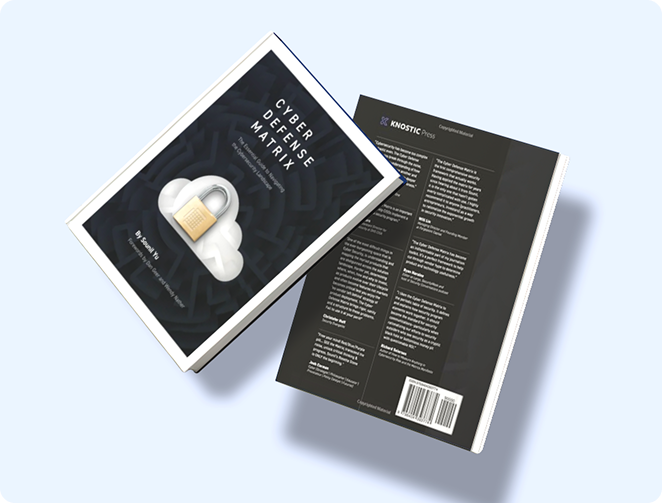
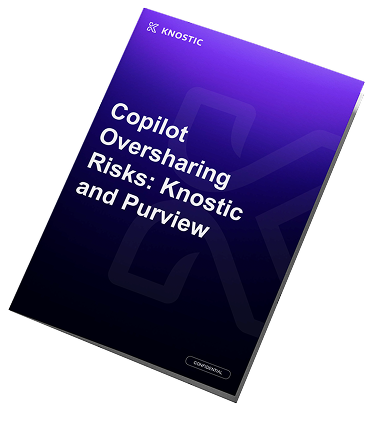
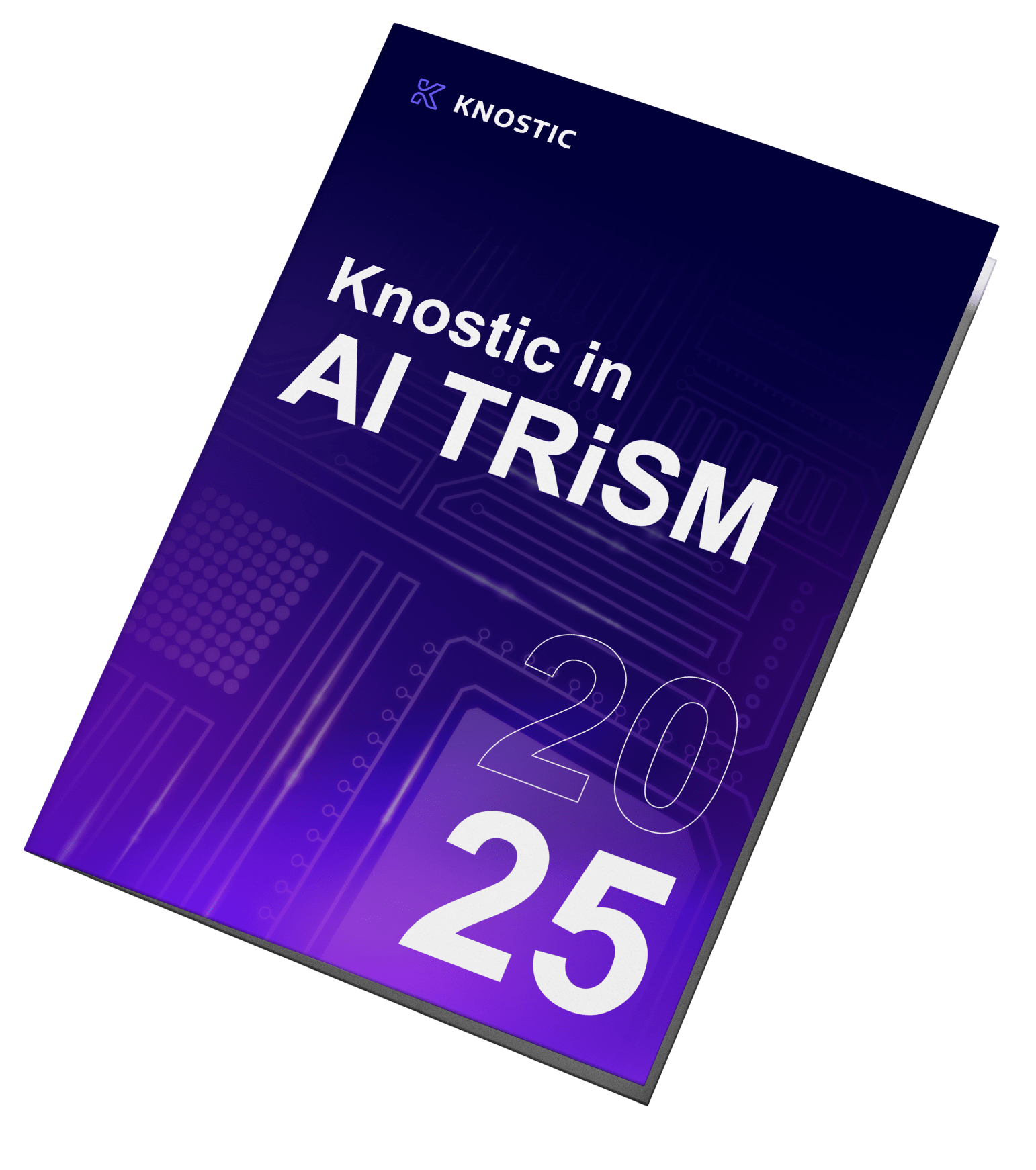
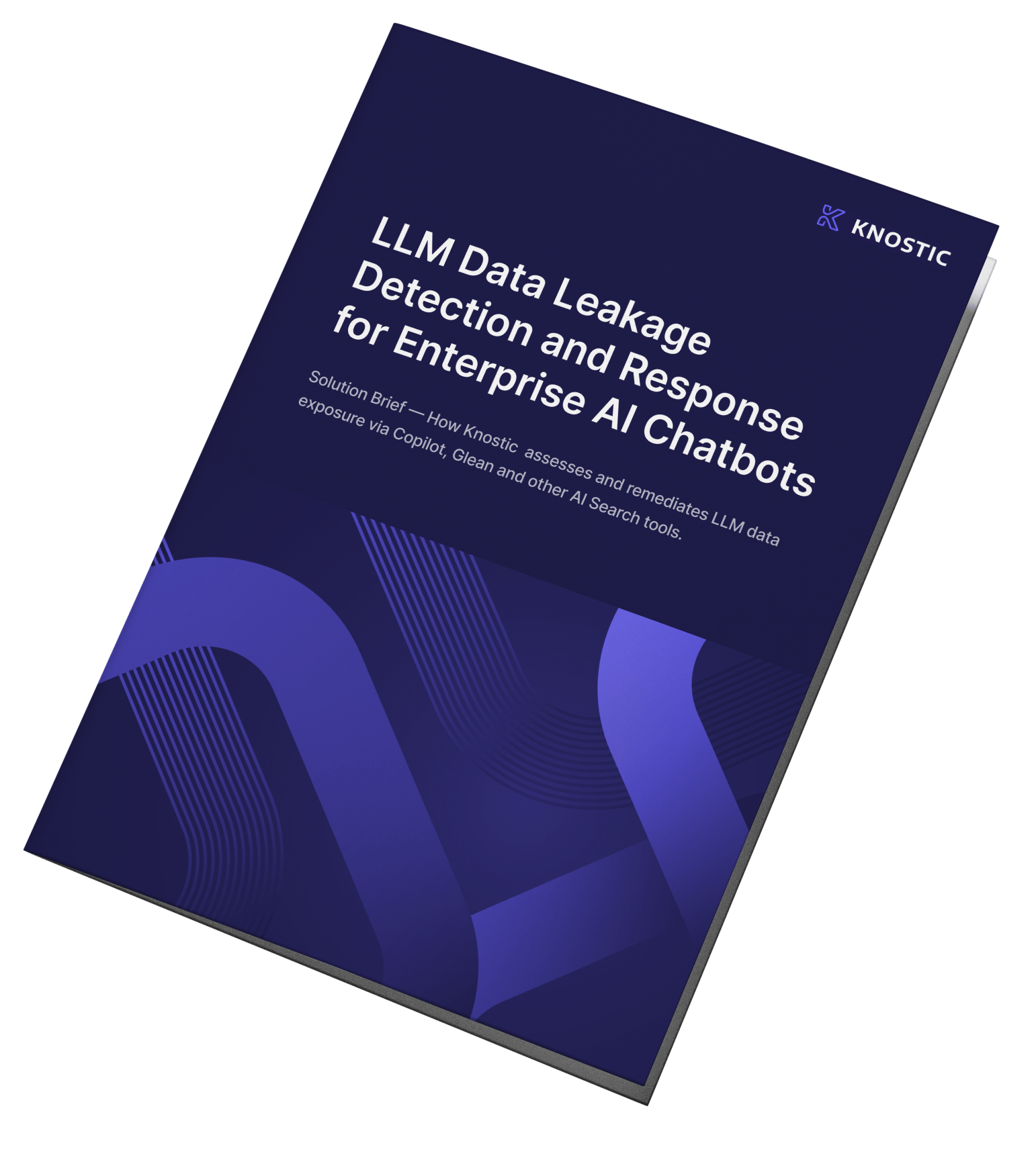
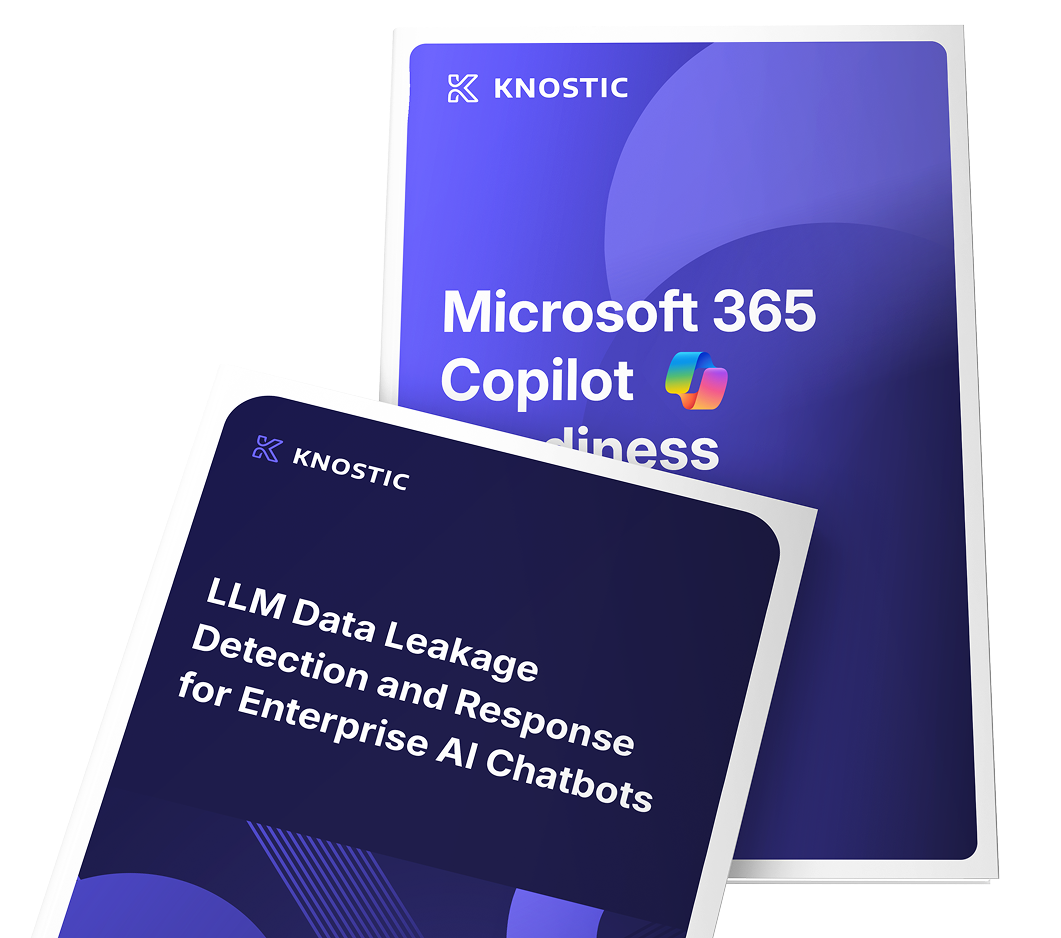
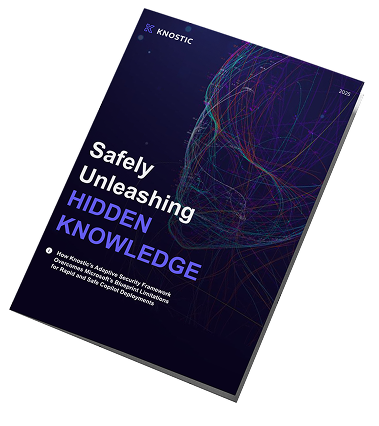
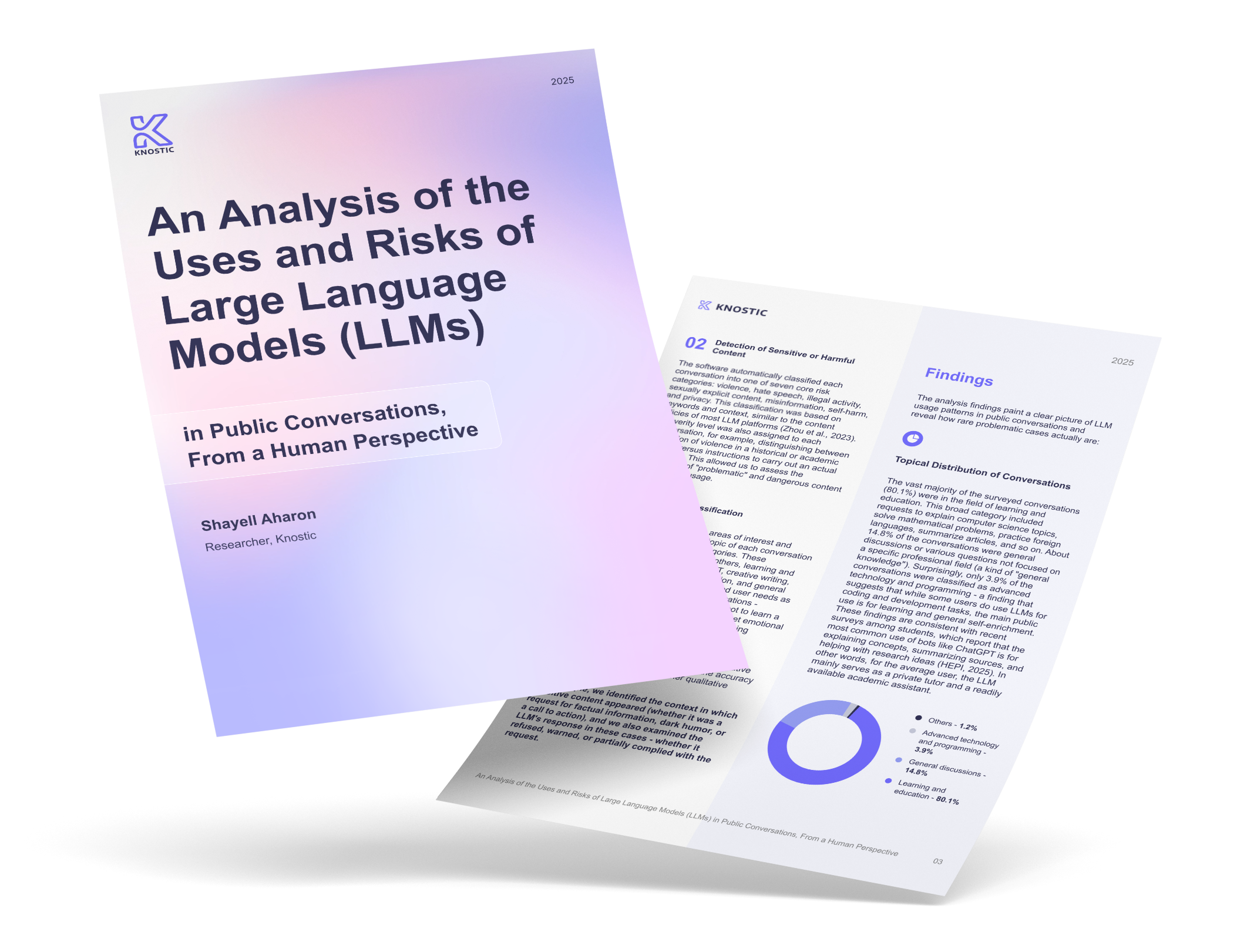




-vs-Persona-based-access-controls-(PBAC).png?width=520&height=294&name=Role-based-(RBAC)-vs-Persona-based-access-controls-(PBAC).png)

